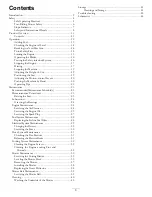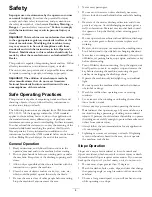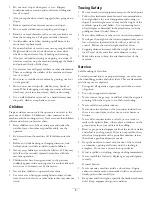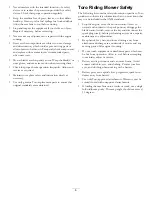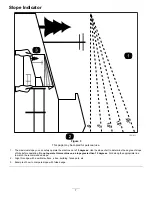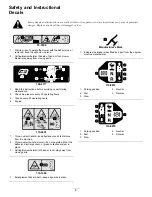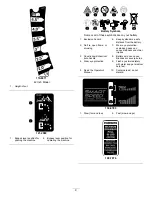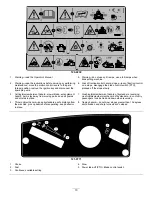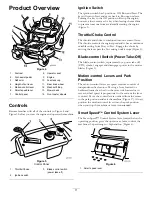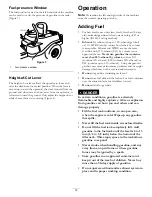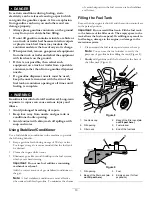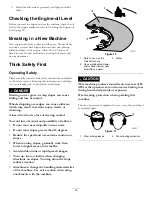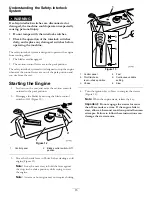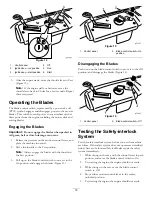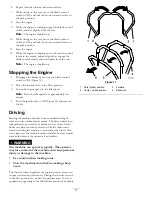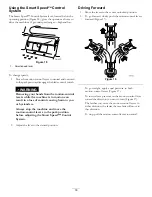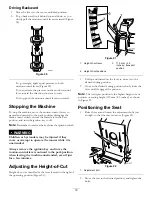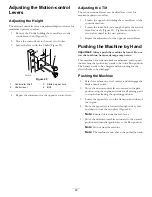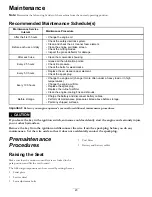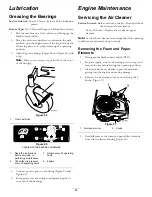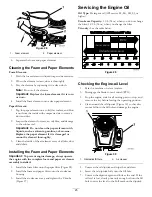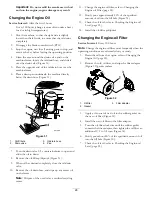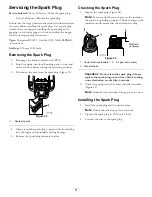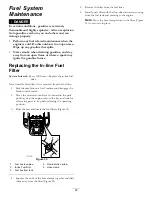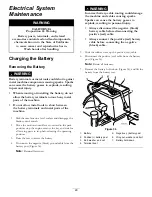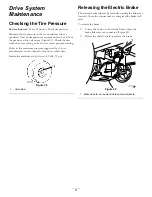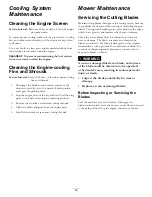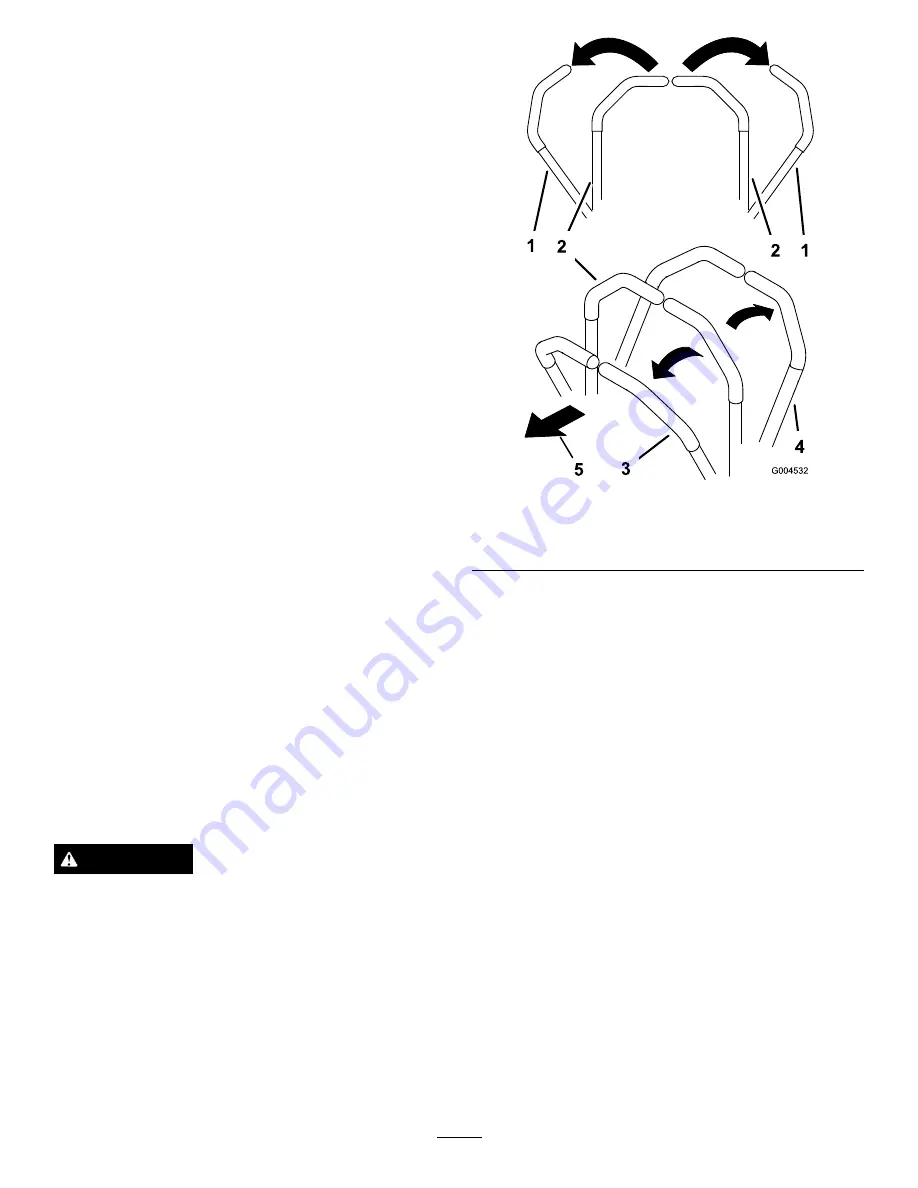
6.
Repeat with the other motion-control lever.
7.
While sitting on the seat, move the blade-control
switch to Off, and lock the motion-control levers in
the park position.
8.
Start the engine.
9.
While the engine is running, engage the blade-control
switch, and rise slightly from the seat.
Note:
The engine should stop.
10.
While sitting on the seat, move the blade-control
switch to Off, and lock the motion-control levers in
the park position.
11.
Start the engine.
12.
While the engine is running, move the motion-control
levers to the center, unlocked position, engage the
blade-control switch, and rise slightly from the seat.
Note:
The engine should stop.
Stopping the Engine
1.
Disengage the blades by moving the blade-control
switch to Off (Figure 16).
2.
Move the throttle lever to the Slow position.
3.
Lower the engine speed to the idle speed.
Note:
Run it at idle speed for approximately one
minute.
4.
Turn the ignition key to Off (Figure 14) and remove
the key.
Driving
Driving the machine benefits from an understanding of
what zero-turn-radius mower means. The drive wheels turn
independently, powered by hydraulic motors on each axle;
hence one side can turn in reverse while the other turns
forward causing the machine to spin rather than turn. This
vastly improves the machine maneuverability but may require
some adjustment if the operator is unfamiliar.
WARNING
The machine can spin very rapidly. The operator
may lose control of the machine and cause personal
injury or damage to the machine.
•
Use caution when making turns.
•
Slow the machine down before making sharp
turns.
The throttle control regulates the engine speed as measured
in rpm (revolutions per minute). Placing the throttle control
in the Fast position can be best for performance. For most
applications, operating in the full-throttle position is desirable.
Figure 17
1.
Park (brake) position
3.
Forward
2.
Center, unlock position
4.
Backward
17
Summary of Contents for TimeCutter SS 3216
Page 44: ...Schematics G014644 Electrical Diagram Rev A 44 ...
Page 45: ...Notes 45 ...
Page 46: ...Notes 46 ...
Page 47: ...Notes 47 ...

